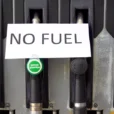A short history of paper money – It Fails!
Suppose you had a printing press in your basement along with a supply of perfect paper. You could slip down to your basement and print a batch of perfect $100 notes or 500 euro notes, but only in an emergency.
I predict that you would find many emergencies.
Suppose the government or central bank had access to that printing press (they do) and suppose they printed (and borrowed) ONLY in circumstances of economic need, political promises, war, necessary deficits, Presidential junkets, Wall Street bailouts, economic stimulus, vote buying, “emergencies,” and “special circumstances.”
Sound familiar? What could go wrong?
And that is the problem with central banks, deficit spending, paper money, digital money, fiat money, and debt based money. There is minimal control or limit on its creation. The western world lives with all the above but pretends to have no clue regarding why:
Global debt exceeds $200 Trillion. (Can’t be repaid.)
Income disparity between the wealthy and poor is huge and rising.
Much of the world is mired in poverty and debt.
The U.S. has nearly 50 million people on food stamps (SNAP).
The U.S. government is in debt nearly $19 Trillion, not counting the $100 – $200 Trillion in off-balance sheet liabilities and unfunded liabilities such as military pensions, Social Security and Medicare. (Can’t be repaid.)
Politicians pay an inordinate amount of attention to the legislative needs of the major banks and are usually compensated accordingly.
The political system in the U.S. seems obsessed with keeping the banking cartel, military contractors, “Big Ag,” and “Big Pharma” profitable, at the expense of the citizenry.
Congressional approval ratings (U.S.) are about 10%.
But what could go wrong …
Borrowing and printing “money” into existence increases the total currency in circulation and creates consumer price inflation.
Gold has increased in price to about $1,100 from $20.67.
US debt – nearly $19 Trillion – is so high that the Fed must maintain ultra-low interest rates, which destroys capital, punishes savers, and widens the wealth gap. I repeat – what could go wrong?
Ultra-low interest rates encourage mal-investments, booms and busts. The “shale-oil miracle” and resulting bust is one example.
Negative interest rates exist on European government debt (around $5 Trillion and counting). Insane!
Excess debt encourages higher taxes, capital controls, and weak economies.
Booms and busts are more common and more devastating. A stock market crash in 2016 is not unlikely. Remember 2000 and 2008!
And many more, including more unemployment, bankruptcies, store closings, wars, and human misery.













Leave A Comment